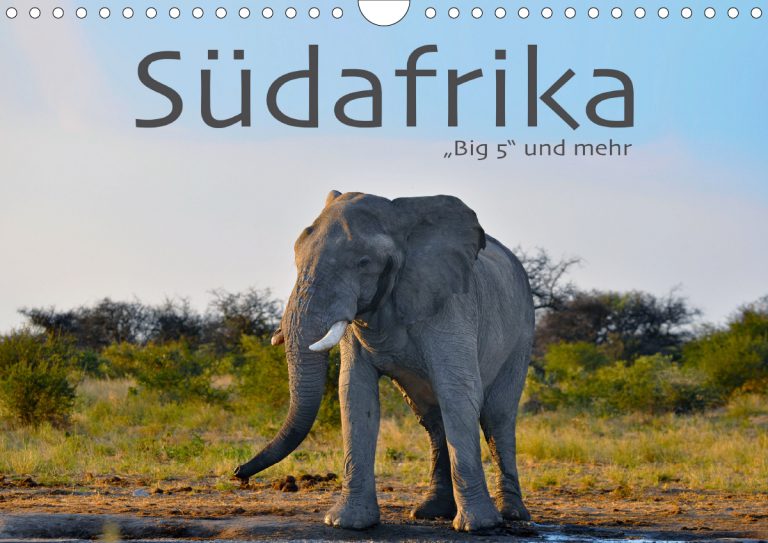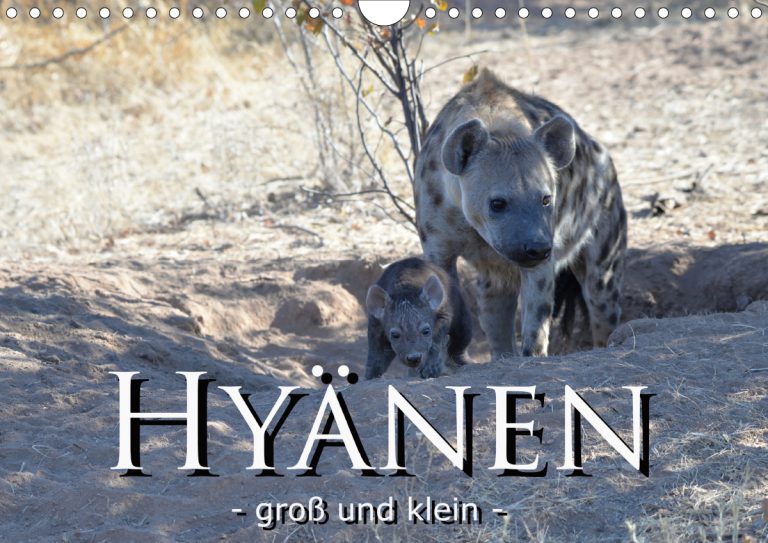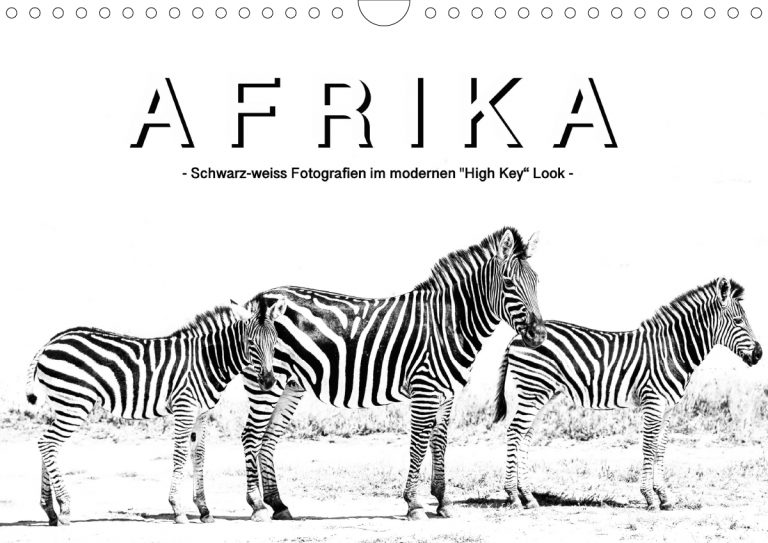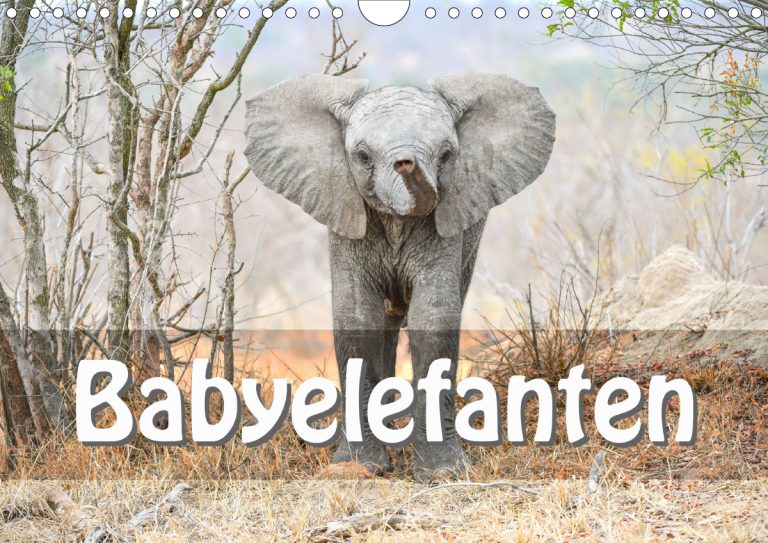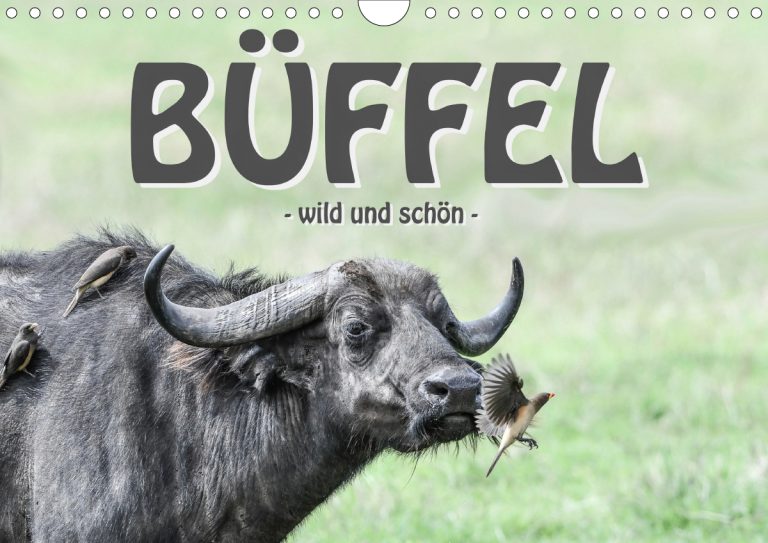Travel Report Mana Pools (Zimbabwe)
Welcome to Mana Pools National Park, a UNESCO World Heritage Site and one of Africa’s last untouched wilderness areas. Situated on the banks of the majestic Zambezi River, this park offers a breathtaking backdrop of lush floodplains, dense forests and vast plains.
A variety of wildlife can be found here, including elephants, lions, leopards and rare bird species. Whether on a guided safari, a canoe tour or a relaxing walk, Mana Pools National Park promises an unparalleled wildlife experience and a profound connection to the untouched beauty of Zimbabwe.
Journey to the Mana Pools National Park
From Europe, you usually fly via Johannesburg, on to Zimbabwe and then either to Harare or Victoria Falls. There are a number of airlines to choose from, but we would only recommend Airlink. A former subsidiary of South African Airlines, it is reliable, safe and offers a good service.
The journey to Mana Pools National Park is almost always by plane from Victoria Falls, Harare, Lake Kariba or Hwange National Park (if you have been there before). The flight is operated by small aircraft and is offered by various providers, e.g. Mack Air.
The flight time to this remote park is around 1.5 hours. Traveling by car is not recommended. You may not fly directly, but rather land in between.

Journey from Harare to the Mana Pools National Park
Harare has 2 airports from which you can fly to Mana Pools in small airplanes. We fly from Robert Mugabe International Airport. The employee of our tour company is already waiting for us at the airport and carries out the uncomplicated and quick check-in with us.
We then wait in the lounge for around 20 minutes. Then we are the only ones to be picked up by bus and taken to our plane. We fly in a small four-seater Cessna with Ben, our pilot. There are no other guests on board. The flight takes a good 1 hour and 20 minutes and the view from the plane is breathtaking with constantly changing scenery, as we are only flying at an altitude of just under 3000 meters. The runway in Mana Pools is a typical African air strip with very red sand, which makes the landing pleasantly soft. Our vehicle with our guide “TV” is already waiting and after the plane has taken off again, we drive towards the lodge, which takes another 45 minutes.
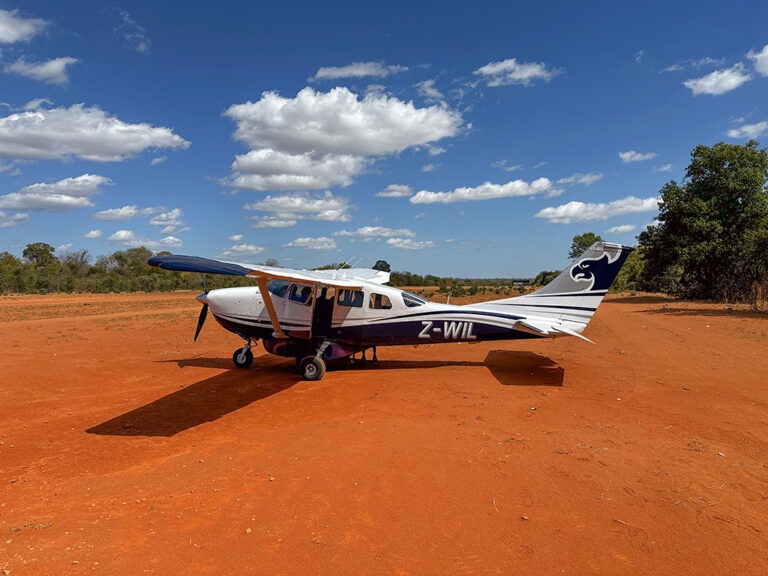

Where is the Mana Pools National Park?
As far as the number of accommodations in Mana Pools is concerned, this is manageable and most lodges are located along the Zambezi River. However, there are some, such as Kanga Camp, which is far from the river and has its own large waterhole, which guarantees animal sightings.
Sample itinerary for 14 days on safari with various national parks and lodges in Zimbabwe
Very few people fly to Zimbabwe and then only want to visit one national park. For this reason, we have put together a sample itinerary here:
- 1 night in Harare – Highland House
- 4 nights in Mana Pools – Nyamatusi Lodge
- 3 nights at Lake Kariba – Bumi Hills Lodge
- 2 nights in Hwange North – Deteema Springs Camp
- 2 nights in Hwange South – Verney’s Camp
- 2 nights in Victoria Falls – Pioneers Lodge
What you should definitely think about when traveling to Zimbabwe:
National currencies: Although Zimbabwe now has its own currency, you can pay for everything in US dollars or, if necessary, in euros. Cash, especially smaller bills, should be taken along for tips and entrance fees, such as parking fees, cabs and visas. Otherwise, credit card payments often only work in hotels, tourist facilities and restaurants.
Vaccinations: Coming from Germany, no vaccinations – not even yellow fever – are mandatory. However, the standard vaccinations are recommended, see Foreign Office suggestions. Malaria prophylaxis applies to the whole of Zimbabwe and should be taken especially in Mana Pools and Lake Kariba.
Visa: A visa is required for Zimbabwe, which is issued on arrival and currently costs US$ 30 per person. It is issued relatively quickly.
Luggage: If you are traveling by small aircraft in Africa, you should pay attention to “soft” luggage (e.g. sports bags), the weight limit and cabin luggage dimensions. Photo equipment should definitely be taken on board. Suitcases are not permitted and, depending on the airline, a maximum of 15-20 kg/person of luggage (does not apply to international flights).
Helpful: A powerful flashlight with spare batteries is often very useful. A cell phone flashlight will also do in a pinch, but often does not shine far or brightly enough.
Clothing: What should you take with you? This depends on the season, so check the weather beforehand. We generally recommend packing according to the onion principle and thus being prepared for cool or even cold temperatures (especially at night and in the morning) as well as warm to hot temperatures (during the day). As you can usually have your clothes washed in the lodges in Africa free of charge or for a small extra charge (possible in all the lodges we have mentioned), you can manage with very little luggage if you wish. This saves a lot of weight.
What photographic equipment should I take with me?
The minimum you should have with you is a smartphone with a good camera. Even if you don’t believe it, the photo and especially the video quality is more than sufficient for many animal encounters,
However, this will not be enough for ambitious photographers. So it should be at least a DSLR or a mirrorless system camera.
You can see our choice of camera at the end of the article, but you should always have at least one telephoto lens and one wide-angle lens with you, and if you can afford it, you should also have a fast lens.
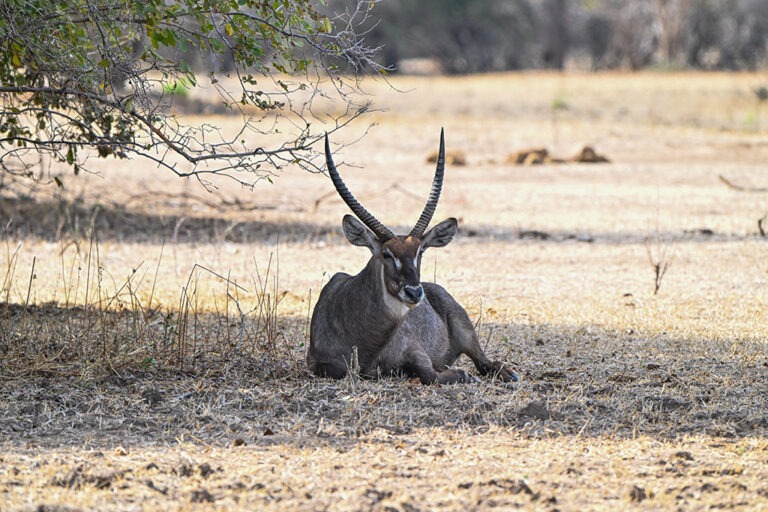
Before the trip, think about which animals you want to focus on and choose the lenses accordingly
If you are traveling in Mana Pools National Park, you need to be aware of 2 things. Most of the animals you will see here, such as elephants, are very large. In most cases, a focal length of 70-200mm is enough to take great photos. Mana Pools National Park is also one of the few Big 5 parks where leaving the vehicle becomes a regular routine and you then approach the animals on foot. Here too, a focal length of 70 to 200mm is perfectly adequate.
At the same time, the national park is not an “off-road” area, so you have to stay on the “paths” and many animals such as hippos in the water are quite far away, so a focal length of 500 or 600mm is an advantage. Another tip. Dust is a big problem in Mana Pools, which is why we cannot recommend changing lenses during safari drives.
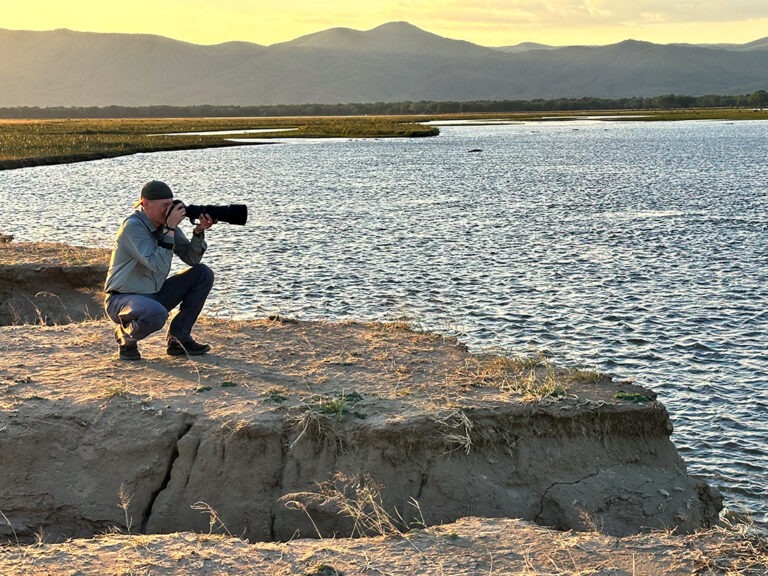
How do game drives in mana pools work?
The times in this national park for safari activities are again a little different to what we are used to. Wake up is at 5:00 am if you want to be woken up, at 5:30 am you are picked up for breakfast. At 6:00 a.m. you go on the first game drive, between 10:30 a.m. and 11:00 a.m. you are back in camp, can enjoy an early lunch and then have time to do what you want until 3:30 p.m., take a nap or just relax. High tea is served at 3:30 p.m. and at 4:00 p.m. you go on the evening safari drive, which is much shorter here, as you are back at camp between 6:30 p.m. and 7:00 p.m., which is more than enough time. The evening drive includes the famous sun downer, and there is also a coffee stop on the morning drive.
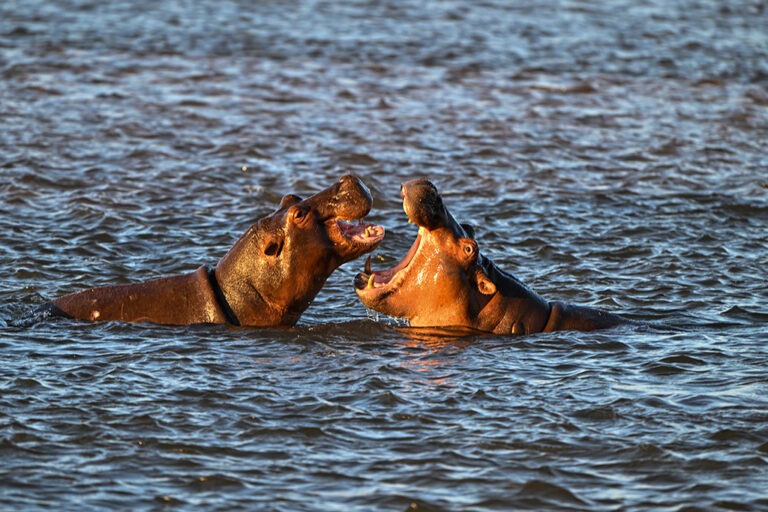
Nyamatusi Lodge in Mana Pools
The entire staff stand in front of the lodge to greet us with an African song. On the one hand, these are the wonderful moments, but on the other, they are also the somewhat awkward moments when you don’t really know how to deal with the situation.
After we have greeted everyone, we have the usual welcome drinks and wet towels to freshen up after the dusty journey. Then there is the familiar briefing on how to behave in the lodge and the surrounding area and we are sitting down to a light lunch. The lunch is of star quality and the view directly onto the Zambezi River is indescribably beautiful.
On the other side of the river lies Zambia. The lodge is far from civilization. There is no cell phone reception or Wi-Fi here. So you can be sure that you will have peace and quiet here. The lodge’s chalets are a mixture of a tent and a house and offer every conceivable comfort with a breathtaking view of the savannah and the river. During lunch, we see the first large elephant walking towards the river and the hippos play in the river.
The tents are very far apart. In total, the lodge stretches along the riverbank for over 1 km. Our tent is about 200m away from the main house, which we really like. Each tent is equipped with a small pool, as well as super nice seating furniture, which makes it pleasant to linger on the terrace.
Interestingly, the tents are equipped with air conditioning and fans, which is very pleasant in the heat during the day. There is an indoor and an outdoor shower and the beds are so good that you almost can’t believe it.
Although the tents are isolated and secluded with a view of the Zambezi River, there are surprisingly few wild animals roaming the open savannah in front of the tents. Every now and then an elephant passes by, otherwise you only hear the sounds of the hippos.
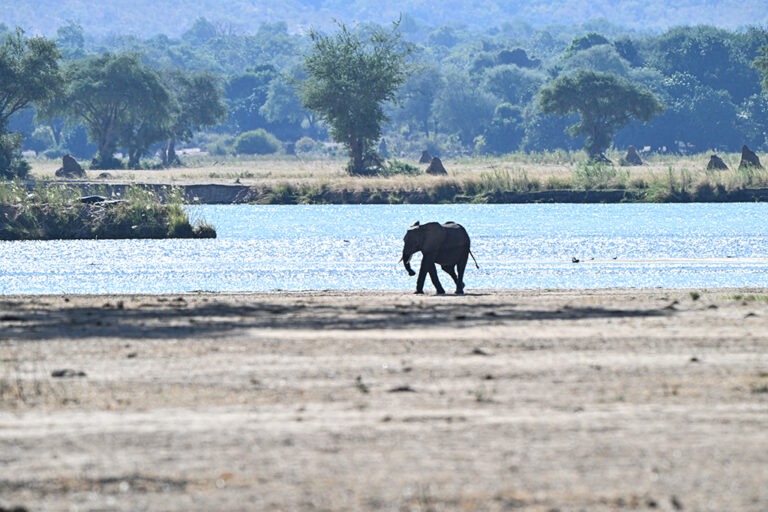
Food and Drinks
The food at the lodge is excellent as far as lunch is concerned. Breakfast and dinner, on the other hand, could definitely be of a higher quality to justify the high price of the lodge. The portions are also rather small and you don’t get the feeling that you are really full, which you somehow are. This lodge is therefore quite good for those on a diet.
The service and staff are exceptionally friendly, but sometimes a little overwhelmed.
The places for lunch, dinner and breakfast change daily. Normal breakfast in the boma, which is very nice, especially early in the morning with a campfire. Sometimes breakfast is also inside in the main house. The same applies to dinner and lunch. Sometimes you have a table for yourself, sometimes you eat with the whole group.


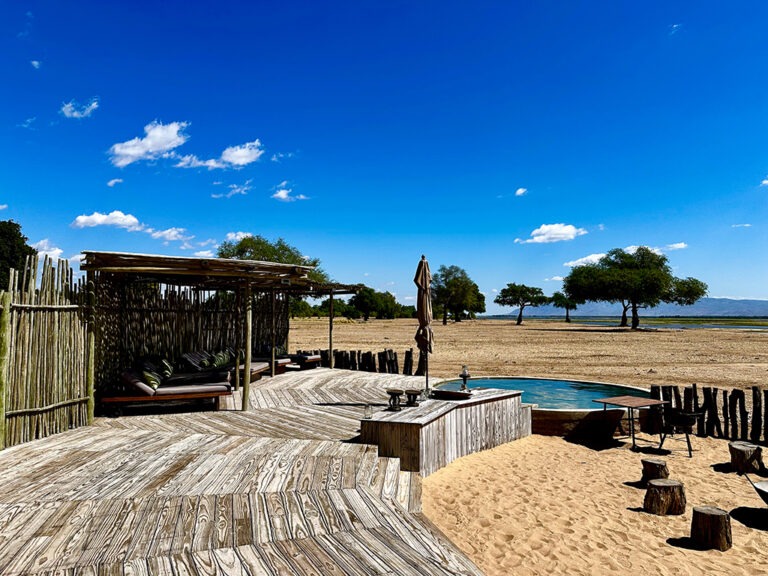
Climate
The Mana Pools National Park is never really cold, at most it can get “fresh” in the winter months. Nevertheless, you should take warm clothing with you just in case, following the usual layering principle. It is always very hot during the day, even in the winter months. At night there is air conditioning in the tents, which can also keep you warm if necessary, which would be very pleasant, but is probably rare.
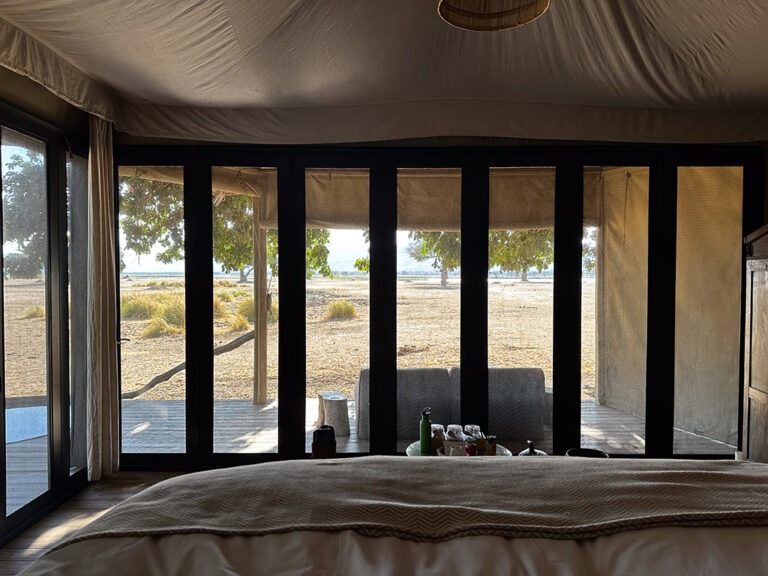
Comfort in the tents
Nyamatusi is certainly THE luxury camp in Mana Pools and belongs to the ABC (African Bush Camps) Group. The tents are large and luxuriously equipped, including a mini bar that is filled daily (free of charge, of course). The facilities have been well thought out. There are USB and normal sockets by the bed, which is also where the light switches are. There are enough sockets in the tent for all charging devices, both with European connections and the plugs for Zimbabwe (you should definitely have an adapter with you anyway). The toilet and shower are in separate rooms and are slightly open to the outside. Despite air conditioning and fly screens, there is also a mosquito net, which serves its purpose and also looks nice in the evening. The water is of drinking water quality, but you also get filtered water.

Mana Pools Animals
First of all, it is important to understand that Mana Pools is a national park, so you are not allowed to drive off-road and also no more trips after 19:00. This limits the opportunities to see shy animals and to get close to the really interesting animals.
Although Mana Pools is home to all animals except giraffes and rhinos, you don’t get to see many of them. So if you are going on safari for the first time, this area is not necessarily the best choice.
For the experienced safari vacationer, however, the park offers the attraction that you can get out of the car for most animals and animal sightings in order to approach the animal on foot together with the guide, which enables excellent photo perspectives.


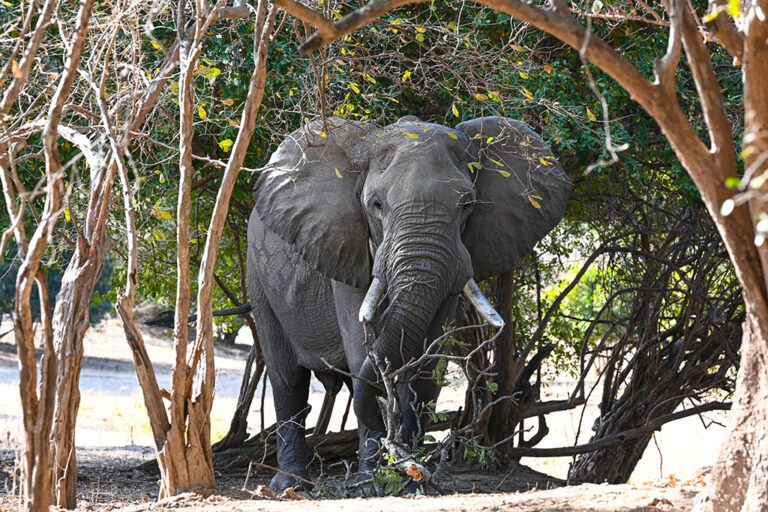
The Elephant Fred
The absolute attraction is an elephant called Fred, who has learned to reach the treetops standing on his hind legs. This spectacle is incredible, but you need a lot of luck to see it. We had that luck.
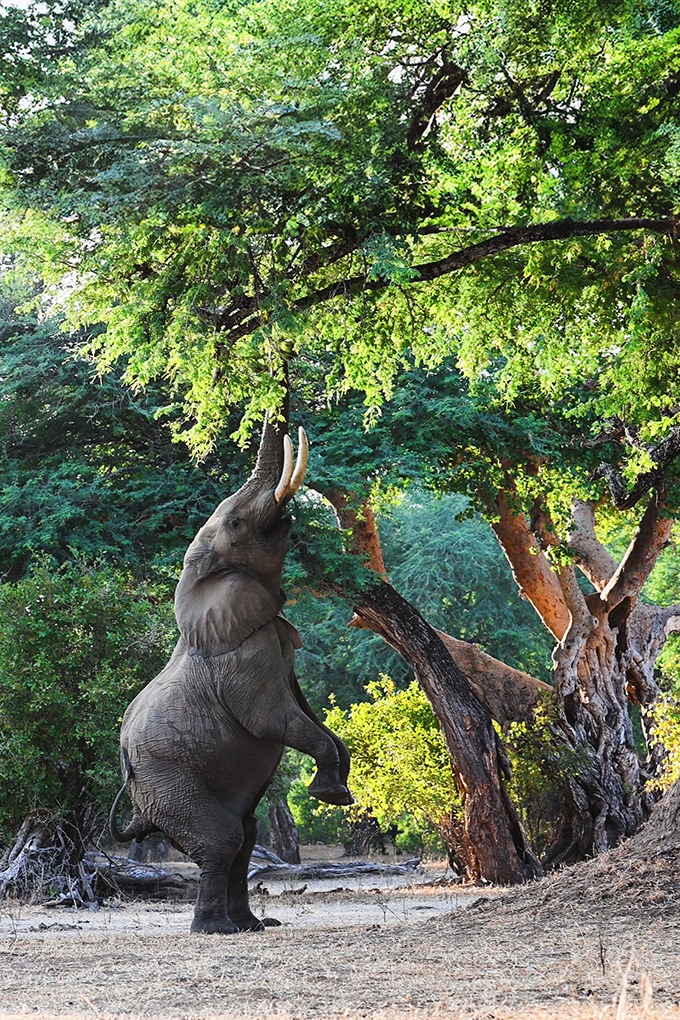
Wild dogs with cubs
Mana Pools is also home to the very rare wild dogs, which also raise their young here. A bushwalk to the Wild Dog Dens is definitely an experience, but after almost 6 km there and back you know what you’ve done, as it’s already pretty hot during the day. Of course, there are also many other interesting animals to see along the way.
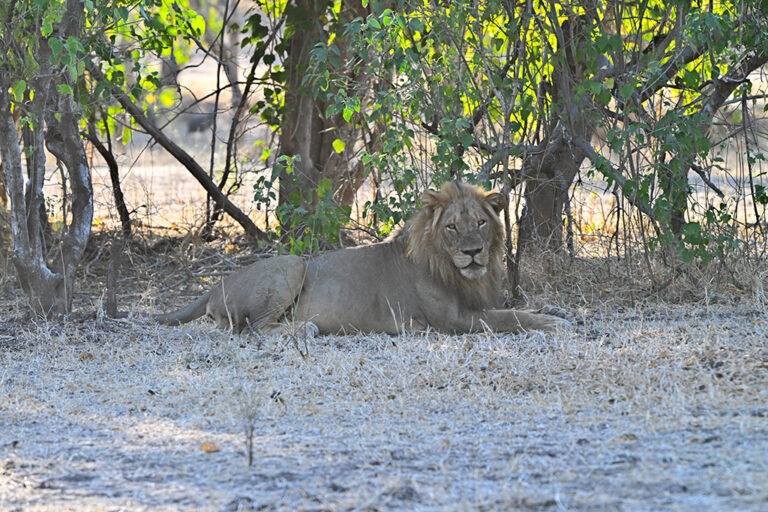
Canoeing on the Zambezi
The lodge offers various activities in addition to the safari tours, for example catch and release fishing as well as canoe tours and bush walks.
The canoe tour is a very relaxing experience, as you don’t actually have to do anything yourself and glide down the Zambezi in a canoe with a guide. The Zambezi itself is full of hippos and crocodiles and, if you are lucky, you might see an elephant or other wild animals on the embankment.
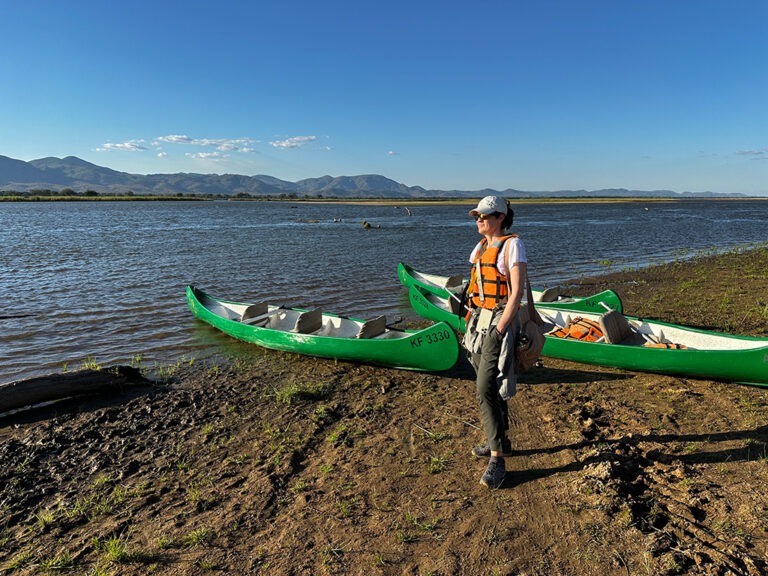
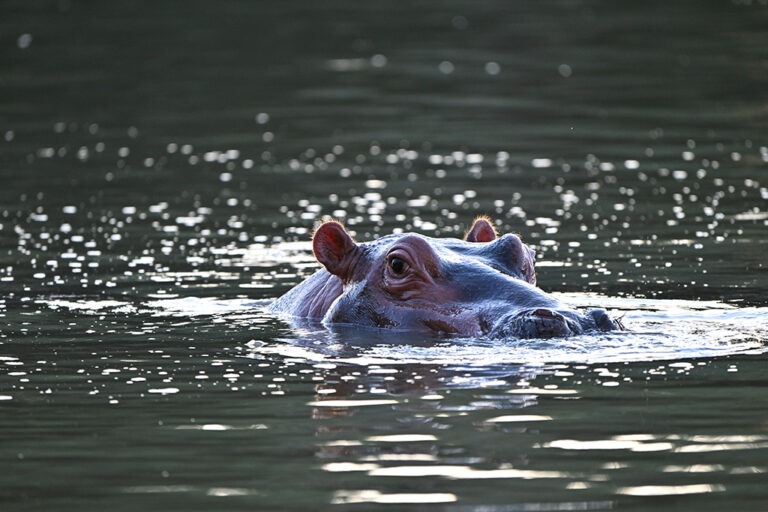
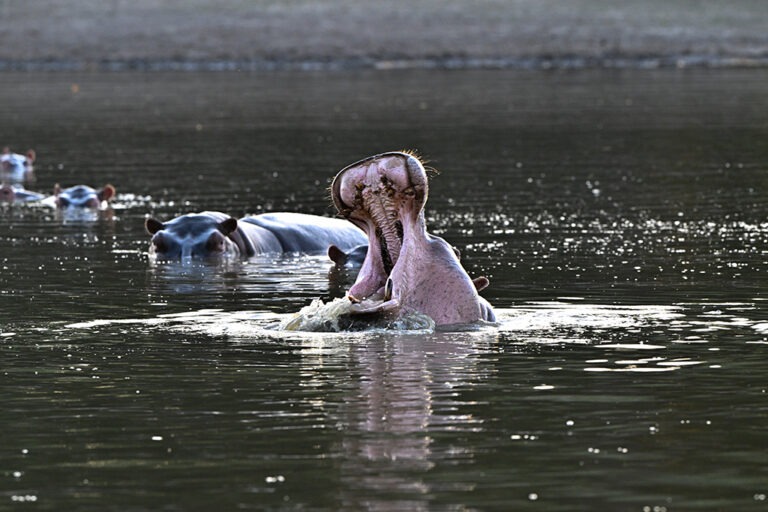
The best part is the sundowner at the end of the canoe trip, right where you get out of the canoes. From here you have a wonderful view of the setting sun and the Zambian mountains, as well as the hippos.
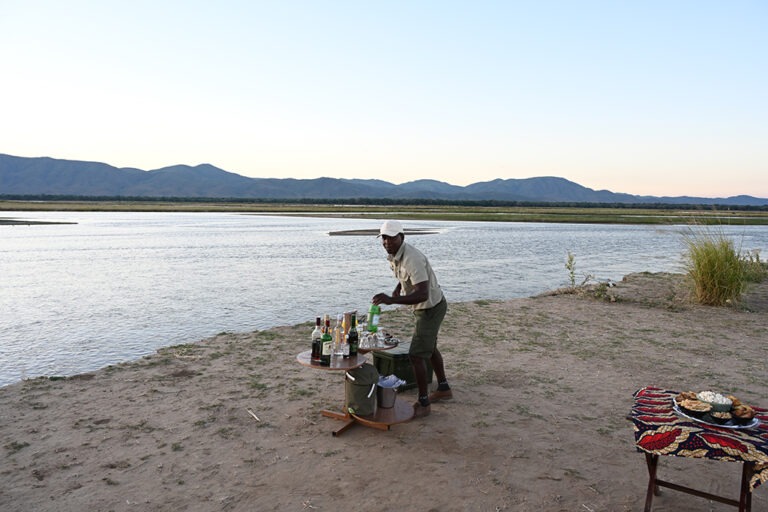
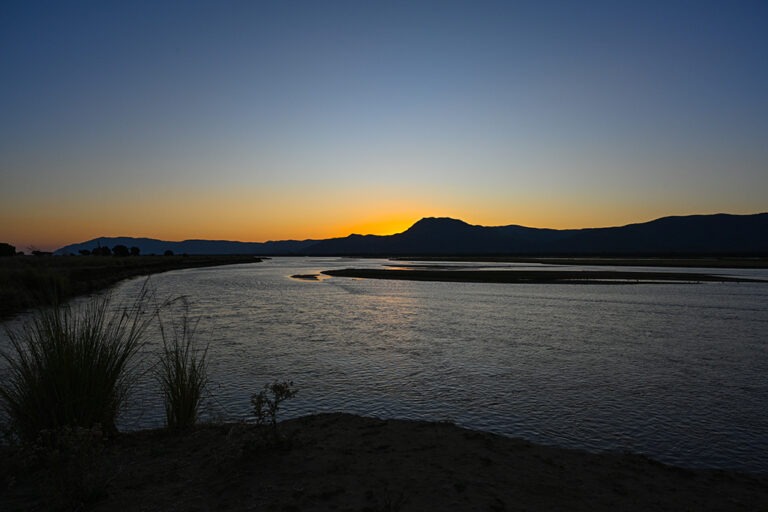
Our conclusion about Mana Pools National Park and Nyamatusi Camp
Nyamatusi is certainly one of the best lodges in Mana Pools. However, considering the high price, there are a few small points that could be improved. These include, for example, clear information about what exactly takes place when, such as meal times or when it is a pure game drive or a game drive with walking safari.
The quality of the evening meals also varies greatly. The barbecue evenings and buffet evenings are definitely not commensurate with the price (even if the meal of a Mopani Worm certainly left a lasting memory). In contrast, the quality of the à la carte meals, mostly at lunchtime and sometimes in the evening, is excellent.
In terms of service, the lodge goes to great lengths and the friendliness of the staff is hard to beat. Our guide (Mash) was very experienced and exploring this great safari area with him was great fun. Mana Pools has an outstanding landscape. However, due to the rather small number of wild animals, the opportunity for game viewing is rather poor and you need a lot of luck to have great animal sightings.
We stayed a total of four nights, which was definitely one night too long, which would be better spent in Bumi Hills. See separate travel report on Bumi Hills at Lake Kariba.
Despite the minor shortcomings, the camp can definitely be recommended for a visit to this park, especially because of the opportunity to get close to the animals on foot.
Want to order a calendar from our photo tour?
What photo equipment for Mana Pools?
The photographic equipment that we took with us to Zimbabwe is listed below. You also have the option of ordering the photographic equipment we used directly via our Photo-Shop and requesting further technical details. There are also lots of extras available there.
Cameras:
- Nikon Z8
- Nikon Z7ii
- Iphone 14pro
Lenses:
- 70-200mm f/2.8 (Nikon)
- 180-600mm f5.6-6.3 (Nikon)
- 24-120mm f/4 (Nikon)
